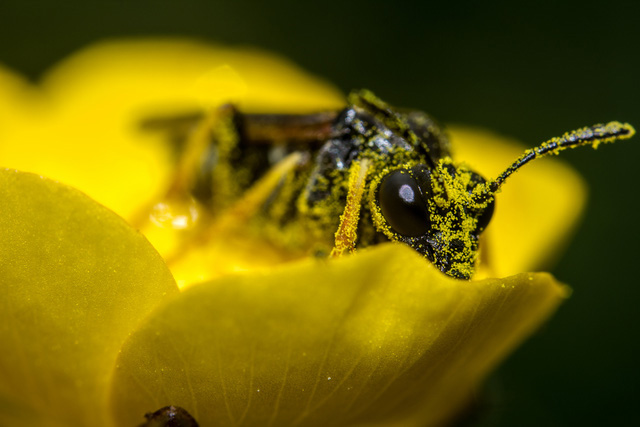A battery of pollen is coming soon
The idea of using pollen into a positive electrode of a battery appears when Jialiang Tang proceeds to read previous studies on batteries, the microstructure of pollen grains and the carbonization of biological compounds.
Referring to pollen , we often think of its role in any plant in pollination to maintain the race and no one is allergic to pollen, so for many pollen it is a pretty good thing. use with their lives. However, scientists at Purdue University, Indiana, can change the perspective of announcing the development of a completely new battery with a pollen-based ingredient.

Although this research has just taken its first steps, the research student before Dr. Jialiang Tang - the author of this project - said he and his colleagues are looking to replace graphite in the core of lithium-ion batteries. with pollen. Jialiang also revealed that the idea of using pollen into the positive electrode of the battery came after he read previous studies on batteries, the microstructure of pollen grains and the carbonization process of compounds. biological substance.
We all know that batteries have two electrodes, called cathode and anode. When both cores are connected by a wire, electrons will move along this circuit and create a stream of electrons - or so-called electric current . Currently, lithium-ion batteries are common in most technology devices such as laptops or smartphones that use graphite anode since 1991. However, the more the technology grows, the more lithium-ion batteries become visible. weaknesses in use time as well as mechanical strength, which is why scientists are constantly studying to find a new battery to replace with superior advantages.
Another member of the research team, Dr. Vilas Pol, said pollen has the potential to become an anode for a new type of battery thanks to its special carbon structure after chemical treatment. Specifically, the research team has noticed two types of pollen of natural origin and abundant reserves: pollen pollen and pollen. Scientists sampled these two pollen and put them into the pyrolysis chamber containing argon gas at high temperatures, the finished product being pure carbon particles. Thereafter, oxygen is pumped in to create holes in the crystal structure of carbon .

This carbon will be put together into an anode of a battery under experimental conditions for the team to test their charging and discharging power. The results showed that it takes up to 10 hours to fully charge the battery, but only one hour of charging requires half the battery capacity. Pollen of the incense tree gives better performance than pollen when in the condition of 50 degrees C anod made from activated carbon of pollen of the battery plant with the capacity of up to 590 mAh / g, for the At 25 degrees C, this number is 382 mAh / g.
Dr Vilas Pol said this figure is really impressive compared to the theoretical charging capacity of 372 mAh / g and 200 mAh capacity after 1 hour of charging. Although it is only in experimental conditions, new batteries using anode from pollen have shown their potential and the research team hopes to quickly complete the project to be ready to register. license of invention.
- Be careful of asthma attacks in Hanoi
- Pollen - the culprit in summer fever
- LG launches Flexible Battery Pack for Smartphone
- Sunflower pollen protects bees
- Marijuana pollen in America is a source of nutrition for bees
- Develop a li-ion battery that alerts itself of gas that is about to explode
- US manufacturing resupply equipment dead battery
- How does the phone battery work and why can it explode?
- Making a li-ion battery has 3 times the current time
- Why does the phone battery explode after being bitten by a Chinese youth?
- Is smartphone battery just charging once a week?
- Behind the strange yellow color in this photo, many people shudder
 Daily use inventions come from universities
Daily use inventions come from universities Special weight loss device helps prevent appetite
Special weight loss device helps prevent appetite 8 inventors were killed by their own inventions
8 inventors were killed by their own inventions Iran invented a motor car powered by water
Iran invented a motor car powered by water